Pounding Nails Face Mural Art
How to get started with mural art
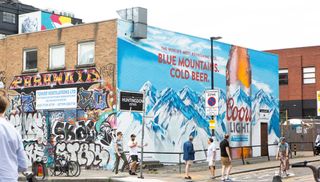
Learning how to get started with mural art could benefit illustrators, graphic artists or painters with a secret ambition to scale up their artwork. Discovering how to design at scale can introduce creatives to a whole new market.
Murals are a clear outward display of craft and human talent, and can add more value to the community and environment. With street art and commercial pieces becoming increasingly varied and more accessible for people to enjoy, there's plenty of opportunities for aspiring artists to tap into.
We talked to the pros and collected 11 tips outlining what to consider when embarking on a mural art project. Remember, while creating mural art in the time of Covid19, it's still vital to adhere to any government guidelines around social distancing.
For even more inspiration, see our roundup of incredible street art.
01. Consider the difference between graffiti and mural art
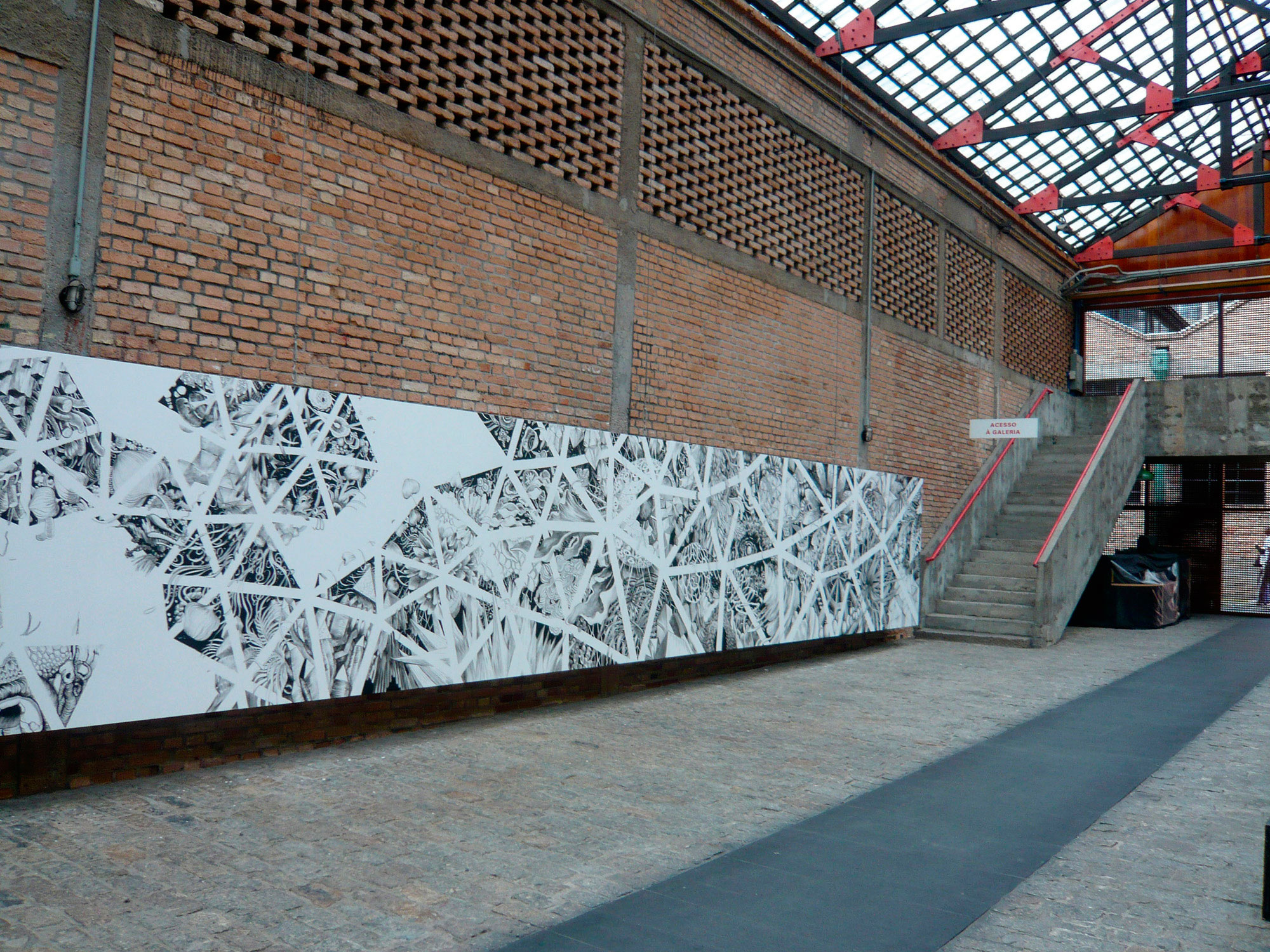
"People traditionally have less understanding for graffiti because it's illegal and a hidden world for them," says illustrator Rick Berkelmans, who runs Hedof, a one-man studio in Breda, The Netherlands that works across fields such as advertising, editorial, murals, installations and clothing. "They don't know who secretly created this message without anybody's permission, which usually generates a feeling of lost control.
Louise Chappell, one-half of London-based duo Good Wives and Warriors, has observed that graffiti still gets a negative press particularly around 'tagging' the urban environment. "Although the visual language has somewhat been adopted and sanitised, it's still a highly illegal activity and graffiti artists still risk arrest or physical harm in making their work," Chappell says. "Mural art certainly was viewed as being quite naff for a while, but I think that's changed."
02. Be open to collaboration
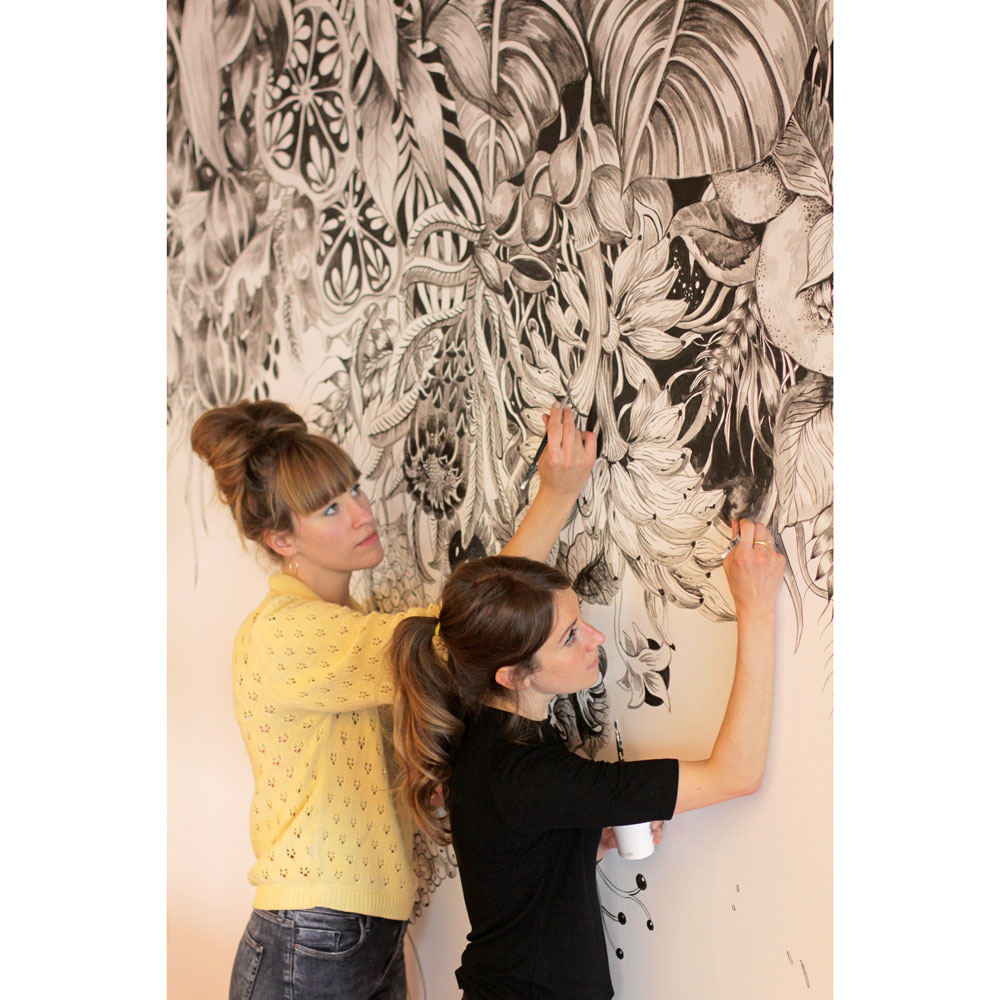
Chappell met her Good Wives and Warriors fellow artist Becky Bolton at Glasgow School of Art where they were both studying painting. "The course structure was very loose and there was a lot of time for hanging around in each other's studios. In our first year we started working together on projects and exhibitions, but it wasn't until we graduated in 2005 that we started collaborating properly." Good Wives and Warriors was officially formed in 2007.
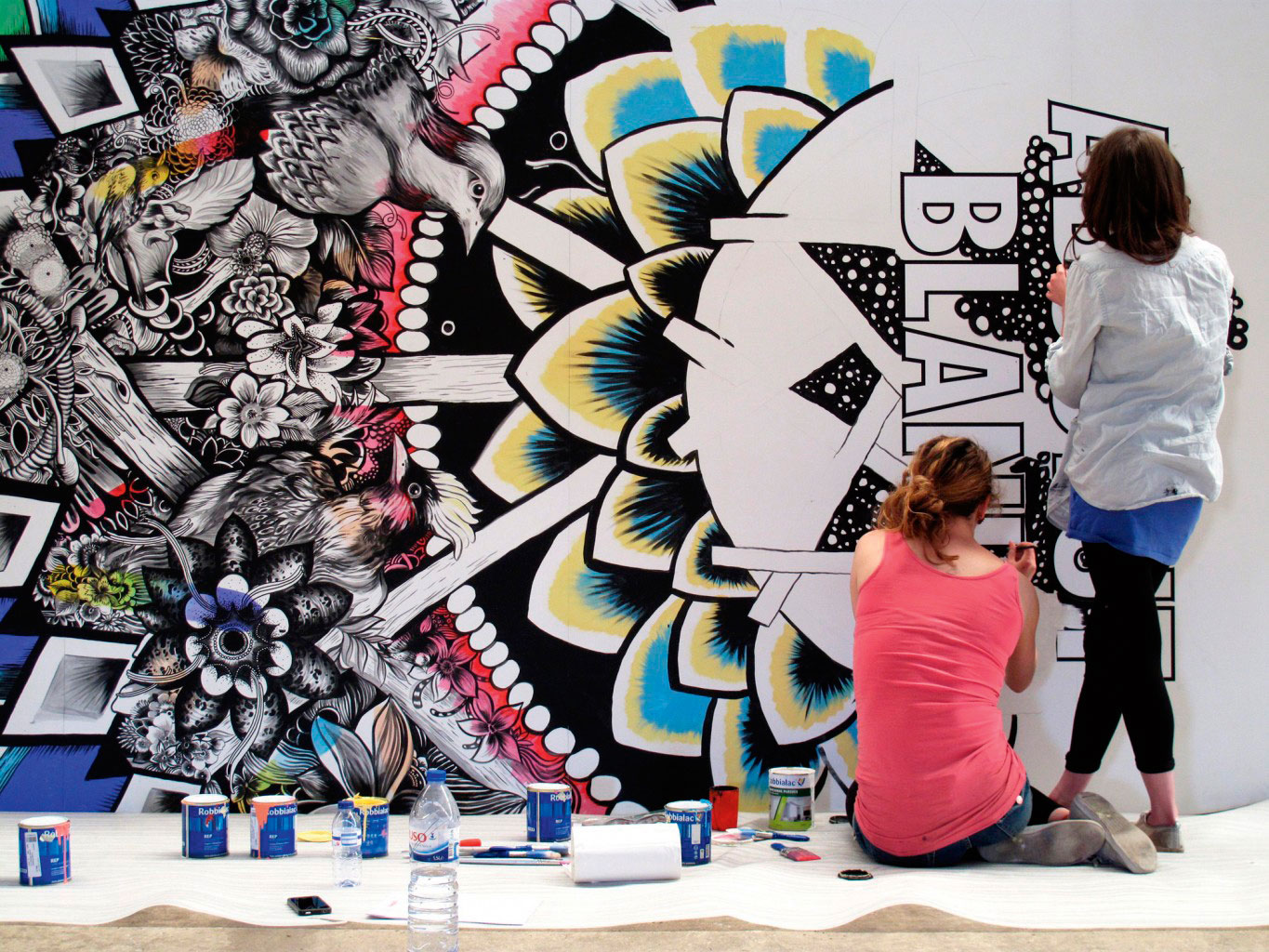
Chappell and Bolton's mix of fine art and commercial illustration has attracted a broad spectrum of clients, ranging from the Barbican to Absolut Vodka, Adidas to Puffin. An early commission with Absolut Vodka involved being filmed painting for an advert.
"That was fun and a little glamorous!" says Chappell. "After that we had a busy couple of years of commercial work. We were commissioned to make a documentary with the BBC for the Commonwealth Games in 2014 and that was amazing. The wall paintings and murals they tend to do are on the lower side of our income scale... but our commercial illustration work enables us to make the occasional large-scale painting," she says.
03. Alter public perceptions
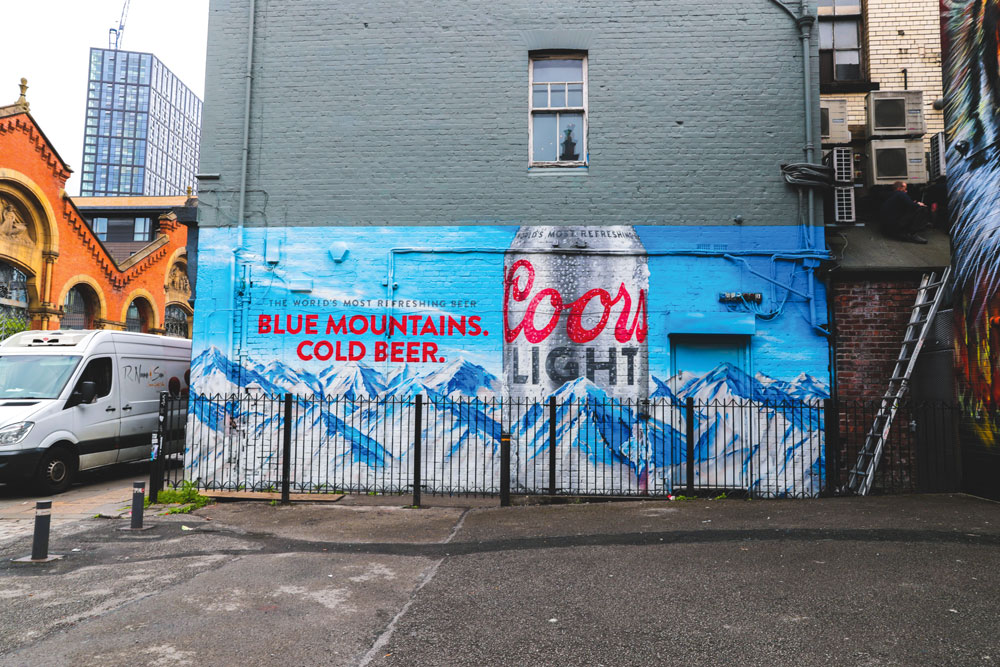
For London-based production company High Rise Murals, getting people to think of murals as art and broadening the kind of clients that use this sort of marketing was an early challenge. "We've worked hard to evolve people's preconceptions of the medium, beyond being largely urban, aggressive and masculine," says COO Geoff Gray. "I think we've started to achieve this, evidenced by the growing number and type of brands we're now working with and the pieces we're painting."
Representing multiple artistic styles, many of whom come from a fine art or graphic design background, High Rise Murals works with some of the world's biggest brands across a growing range of categories, including sports, luxury fashion, FMCG and technology. "I've heard the difference best described by one of our artists as 'graffiti is for other graffiti artists, whereas street art is for everyone'." continues Gray. "Our business model is to make it easier for big brands to use artists to craft bespoke advertising for them, helping them to get potential customers and fans to look up from their screens and engage with their brand."
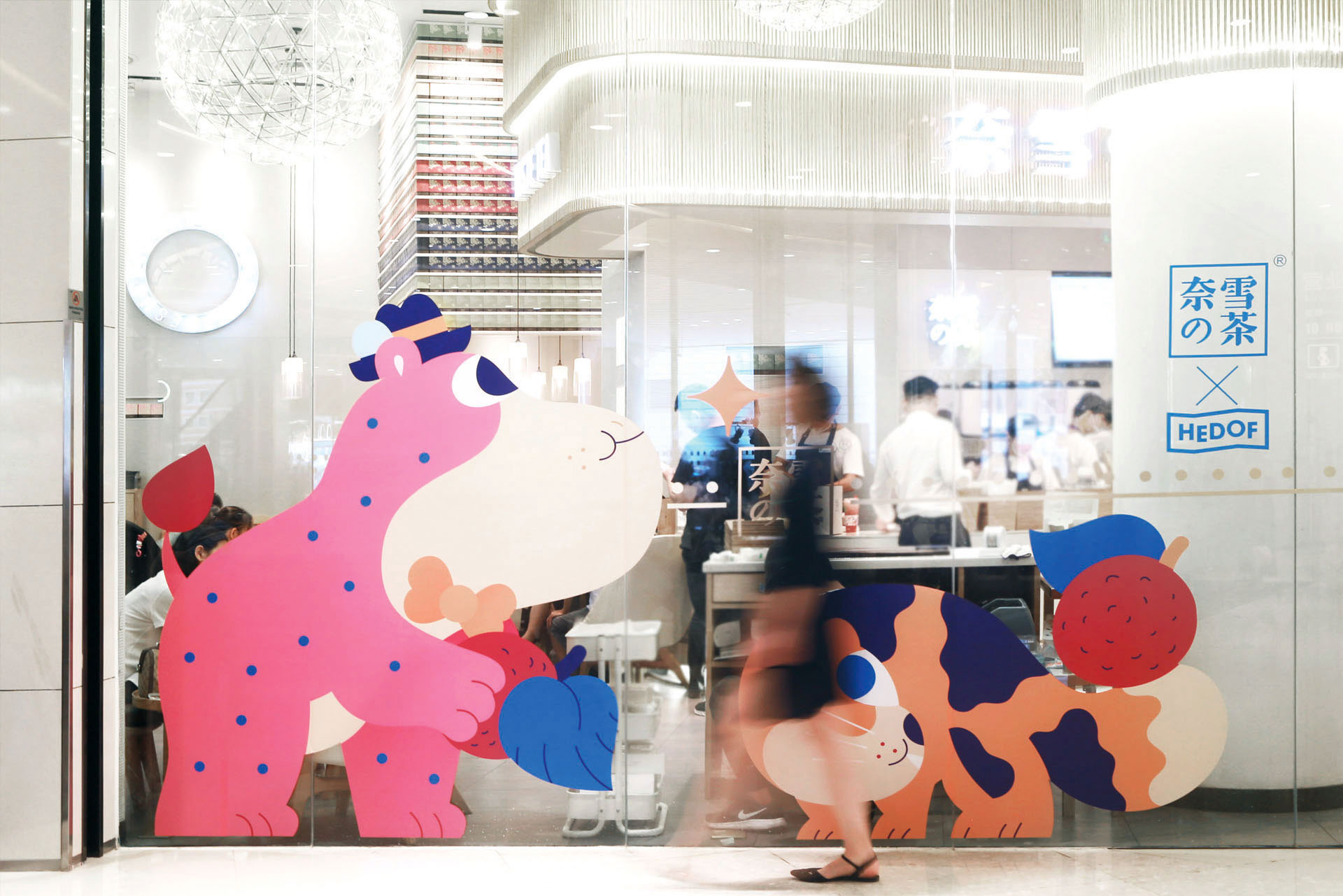
Berkelmans believes it's a more enjoyable, less aggressive approach of mixing art and commerce. "Murals often create interaction; a dialogue, unlike traditional advertising, which is often one-way." Over the years mural projects have become more common and people understand them better, he says. "Since most murals are commissioned, they're created within more of a system and guidelines that connect with a broader audience. And of course, the more you see something, the more familiar it is and easier for you to accept."
04. Be art-led
While High Rise Murals works on projects such as signage, the majority of its business derives from art-led advertising campaigns for brands. Gray believes the more artistic the piece, the more nourishing it is. "From a brand's perspective, large-scale marketing pieces are used to act as a measure of trust because of the cost barriers to entry, but in a largely digital world this effect has diminished."
Gray argues there's still an inherent benefit in having a team of artists crafting a message on behalf of a brand, over a period of time. "People actively photograph it because they enjoy it, and they share it across their own networks. That is rare in most other forms of marketing and reflects positively on the brand which created that moment."
05. Keep an open mind
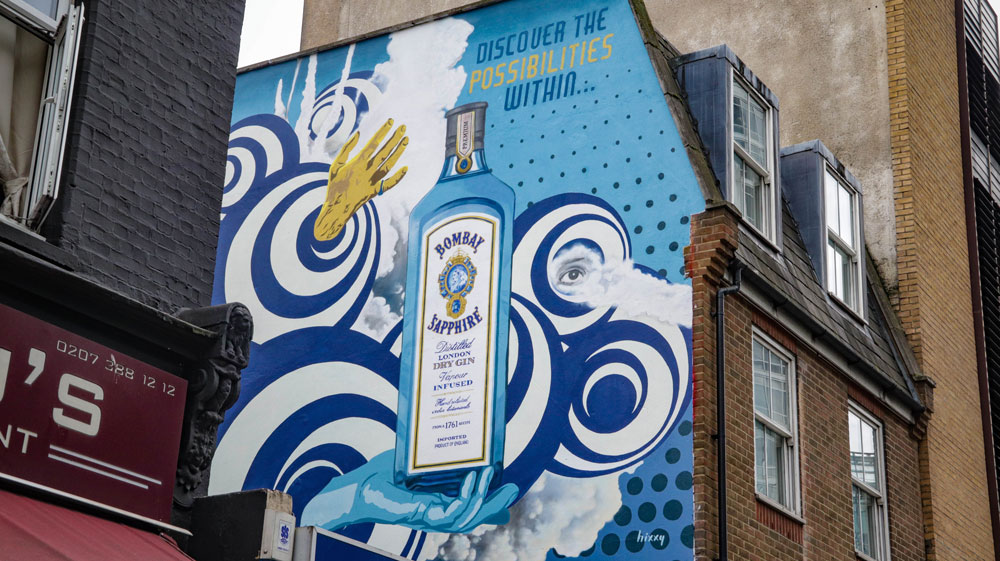
Working with a range of clients from independent business owners to high-profile brands, around 80 per cent of mural artist Josephine 'Hixxy' Hicks' income derives from mural projects. Curious about the graffiti scene, it was her brother, fellow artist Ed Hicks, who first introduced her to street art and painting on a large scale.
"I started in a gradual way, painting and experimenting on large rolls of Fabriano paper pinned up in my studio-cum-bedroom," says Hicks, who studied fine art in Liverpool where she developed the discipline of working solo and creating artwork that interested her. "After graduating I knew I wanted to create and make for a living. I became obsessed with screen print and collage, and this method of layering shape and colour paved the way to my aesthetic of mural painting."
Sharing her work on Instagram slowly led to friends in the event world inviting Hicks to paint temporary spaces and walls at festivals. "It was never something I imagined I'd end up doing, but I guess that's often the way: it found me." Honing your craft takes time and experimentation, and the festival scene is a good starting ground for artists to get practice, as well as at pop-up events and mural jams, Hicks says. "These non-permanent spaces, where the organisers just want some colourful backgrounds, are a great way to build confidence and try things out without too much pressure, while also building your portfolio."
06. Have a go
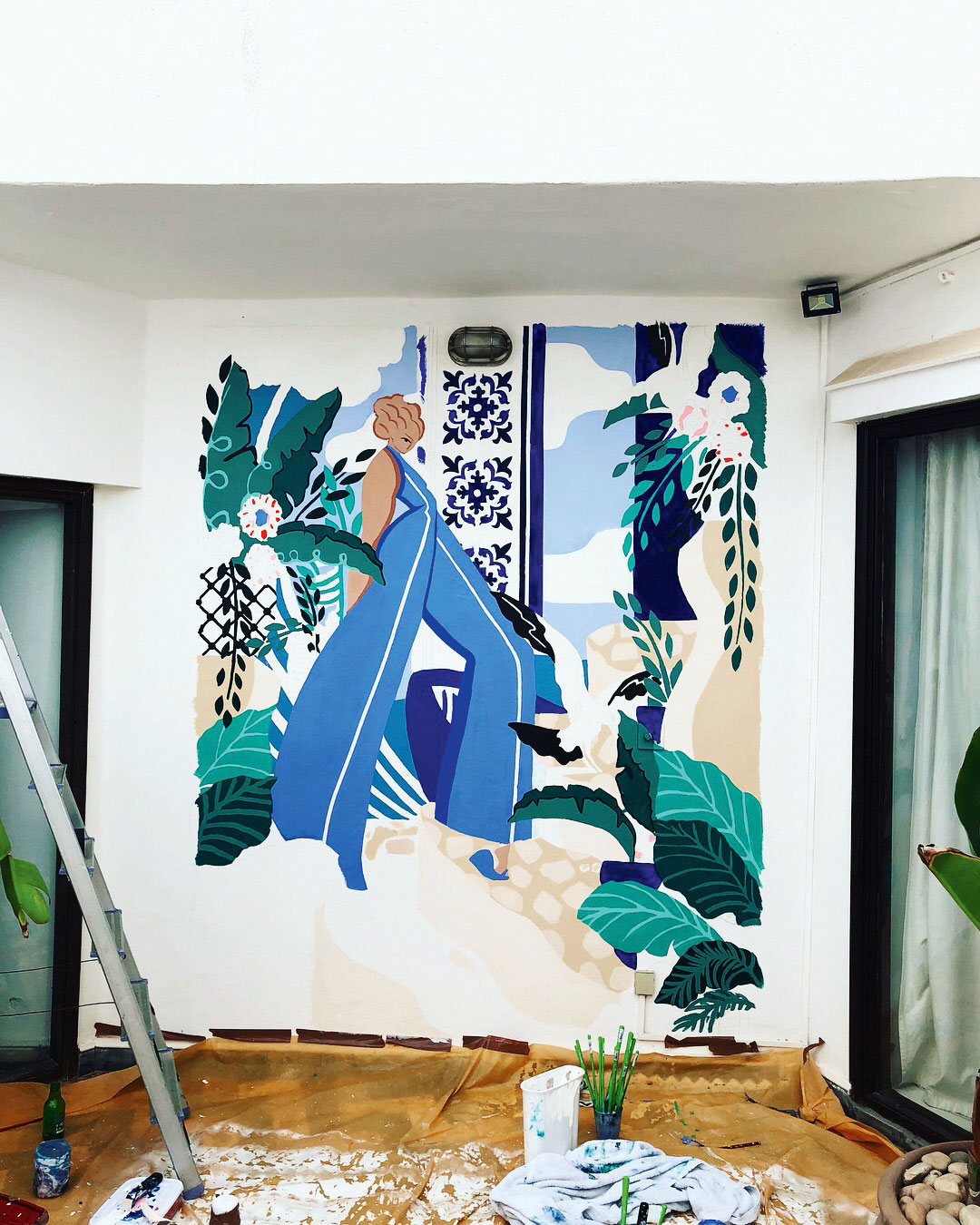
London-based print designer and illustrator Kelly Anna has been working professionally for around three years, producing work for clients such as Nike, H&M, Propercorn and Equinox. For her first solo show last year Anna decided to paint five murals, with no experience of having done it before. "I kept seeing other artists painting murals and I really wanted to paint some too, so I thought it would be a good idea to do some for my first show. Worst idea ever. I had three days to do it and I had to rope in all my mates to help out!"
Four months later Bombay Sapphire commissioned Anna to interpret its new cocktail The Milestone with a ceiling-high mural (see it above). Packed with energy and colour, when capturing the cocktail's variety of flavours Anna was inspired by the milestones in life and "the rocky moments we all have" when creating her designs. "It was a great feeling to know that brands wanted to commission me for murals. I've since painted about 12 murals around the world."
07. Build your reputation
Hicks' first proper mural commission four years ago has proven to be a springboard for her work to date, and while she's still relatively new to this type of work, her portfolio speaks for itself. "What's great about mural commissions is that they're often in places with heavy footfall. The more you do, the more people see your work, so it's a snowball effect."
Despite the challenges of mural art as a profession, direct artist commissions and mural commissions are different things, and the routes to doing them are different. "If you wish to be commissioned as an artist, then you need to focus on building your reputation as an artist," says Gray. "Most brand murals form part of larger marketing initiatives and artists are accessed via a production house plugged into the media world such as ourselves." In this scenario, having an agent to not only represent you, but access these types of opportunities, can be invaluable.
08. Price it right
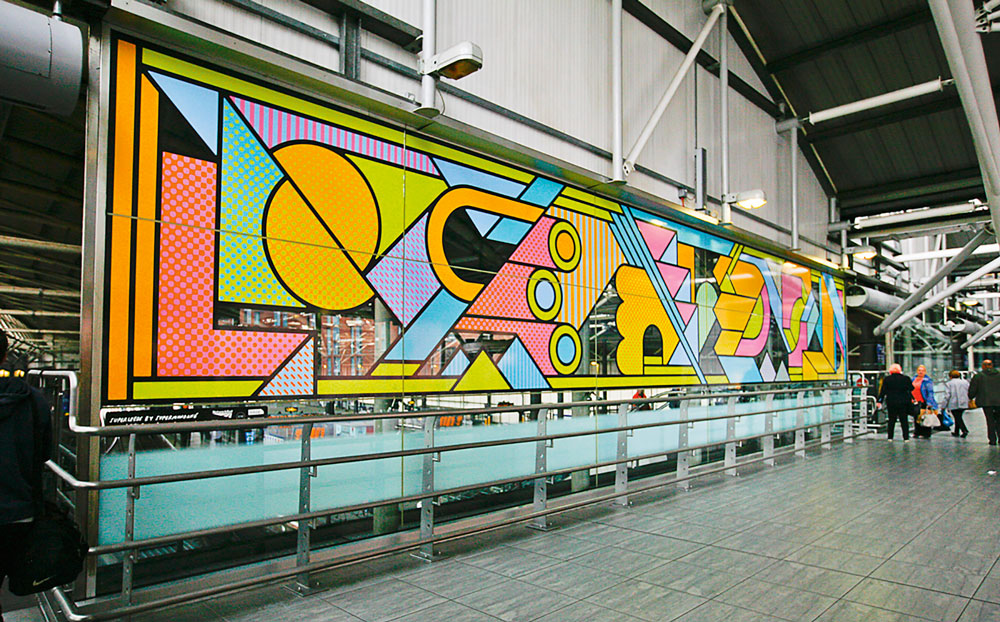
Understanding the market value that an artist brings to these projects is also crucial to pricing these types of jobs. Yet without prior experience it can be a skill in itself. "I have a set creation fee for any project and then it all depends on usage and materials," says Anna. "With the time a mural takes and the materials I use for it, the fees tend to be a little higher just to cover material and time costs."
With a career spanning over 20 years, Leeds-based graphic artist Rob Lowe, aka Supermundane, has been commissioned for almost every kind of setting. He started doing murals early on in his career. "The way I approached it was quite different to how I work now. I could literally go in without a plan and some Posca pens and just draw it.

"More and more I'm being brought into projects as an artist to do my own thing for a specific brand or project and that's the best kind of work," says Lowe. "It feels very satisfying for me to hand it over to an agent to negotiate the fee side of things. Often you're not dealing with the person who manages the budget directly, and nobody really wants to talk about money. It's hard. Most artists tend to undervalue themselves so it's worth having someone having those conversations for you."
Gray, who represents multiple artistic styles at High Rise Murals, many of whom come from a fine art or graphic design background, agrees. "It's hard for an artist to have the confidence or commercial awareness of the market to negotiate effectively; they can easily under- or overvalue themselves, which is a risky game," he says. "We've worked hard to raise the daily rate for artists because we know what brands will pay them. Many are working in their own studios on personal art projects, and taking these commercial jobs makes that symbiosis possible."
09. Know the importance of brand activation
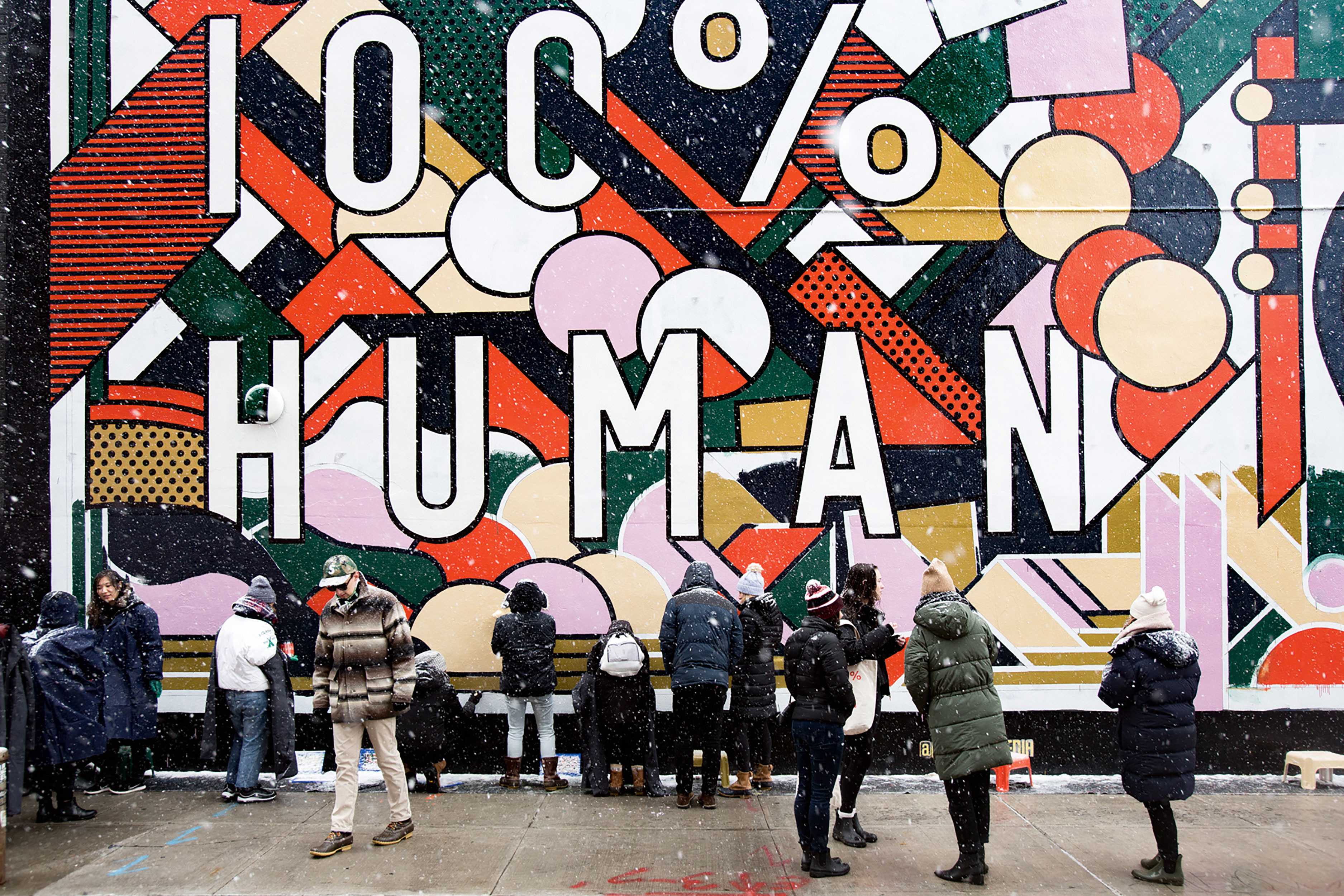
Last Christmas, Lowe was commissioned by ethical clothing brand Everlane to design a mural in collaboration with New York production company Colossal Media, a global leader of hand-painted outdoor advertising. Initially intended to be painted on-site by Colossal, Everlane invited the public to help finish the massive "100 per cent human" mural in the heart of Williamsburg, New York (above). The brand upped the ante by donating $10 to the American Civil Liberties Union (ACLU) for every participant who lent a hand. Everlane kept a running stream of Instagram stories documenting the mural coming to life, which Lowe admits was "weird to watch unfold online, but quite nice too."
Its posts, along with bumps from the ACLU, Lowe and the participants, raked in an additional 111 million digital impressions for the campaign. "People love a video of somebody painting a mural, and brands can then use that – the making of the mural – as part of the campaign." says Lowe. "Before social media, it wasn't seen as particularly cost-effective to get someone in to paint a wall: print is far simpler. But now that we have apps to show videos online, it's more appealing for brands to take that route and use this extra content and show it being made. It's part of this growing idea that people like to see how things are made by hand. It feels more authentic."
10. Don't play by the rules of advertising
Artists have a different way of seeing the world and don't play by the same rules as a marketing professional or advertising expert, observes Hicks. "A hand-painted mural offers the brand a unique opportunity to tap into the zeitgeist while steering the content design inline with their ethos. Additionally, the performative spectacle for the public to see the image being created in front of their eyes is a massive selling point and more likely to drive interaction."
For anyone wanting to follow in her footsteps, Anna encourages aspiring mural artists to find a wall to experiment on – even if that means painting your bedroom wall. "No one needs to know that it's your bedroom," she says. "Otherwise, ask people: put it out there that you're looking for a wall to paint on. You decide what you're going to be and if that's a mural painter, then go start painting!"
11. Start local
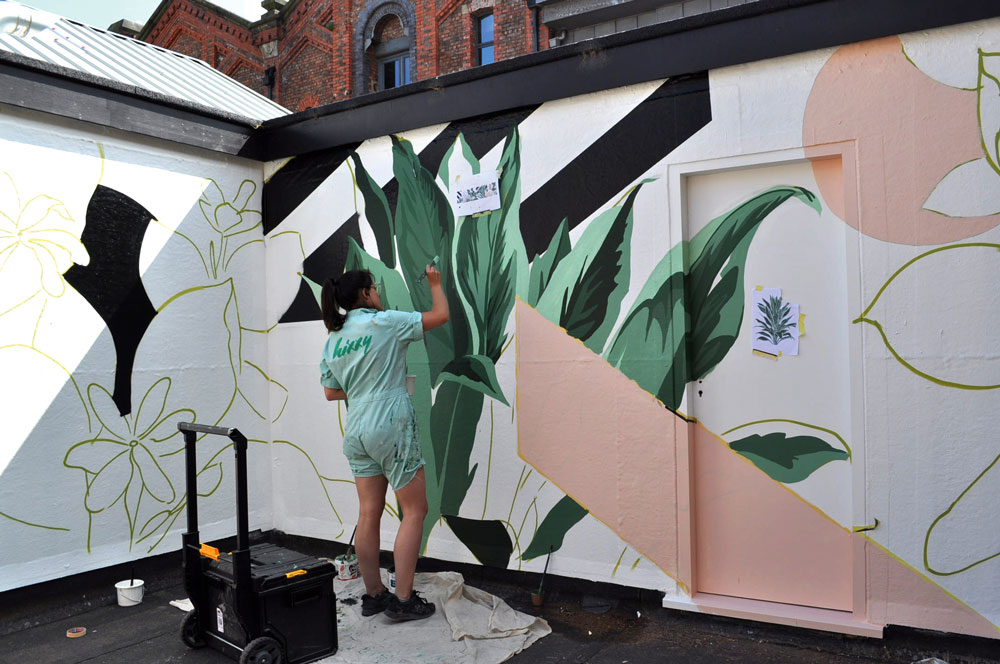
Engaging with the local community and independent business owners is a great place to start. Shops, restaurants and offices are all potential clients. In terms of securing paid jobs, playing to your strengths is key, and Hicks recommends investing time refining your own aesthetic and producing interesting work. "I've always enjoyed the physical process of making art, so mural painting came very naturally. All the brands I've worked for have cited an interest in my personal work."
Berkelmans agrees, believing that the only way to tap into this area is to create your own opportunities. "The way I started was by asking for permission to paint a wall in the middle of my home city, and I asked a film agency to make a short video about the process. When I shared this video online it led to more mural projects. I think it goes like this in many cases: just communicate the work that you believe in and are excited about, and others will pick up on your enthusiasm and will think of you when a suitable project comes up."
Consumers these days are savvy, and know when something is authentic and when it's not, concludes Anna. "Brands understand the value of working with people who have a craft and live it everyday. It's real, it's a craft, it's what the artist lives and breathes, and it's their life. All this means that it comes from a place that's authentic."
This content originally appeared in Computer Arts magazine.
Read more:
- Banksy: Is this Nottingham street art by the mystery artist?
- 13 tips for illustrating large-scale murals
- 34 top free graffiti fonts
Related articles
Source: https://www.creativebloq.com/features/mural-art
0 Response to "Pounding Nails Face Mural Art"
Post a Comment